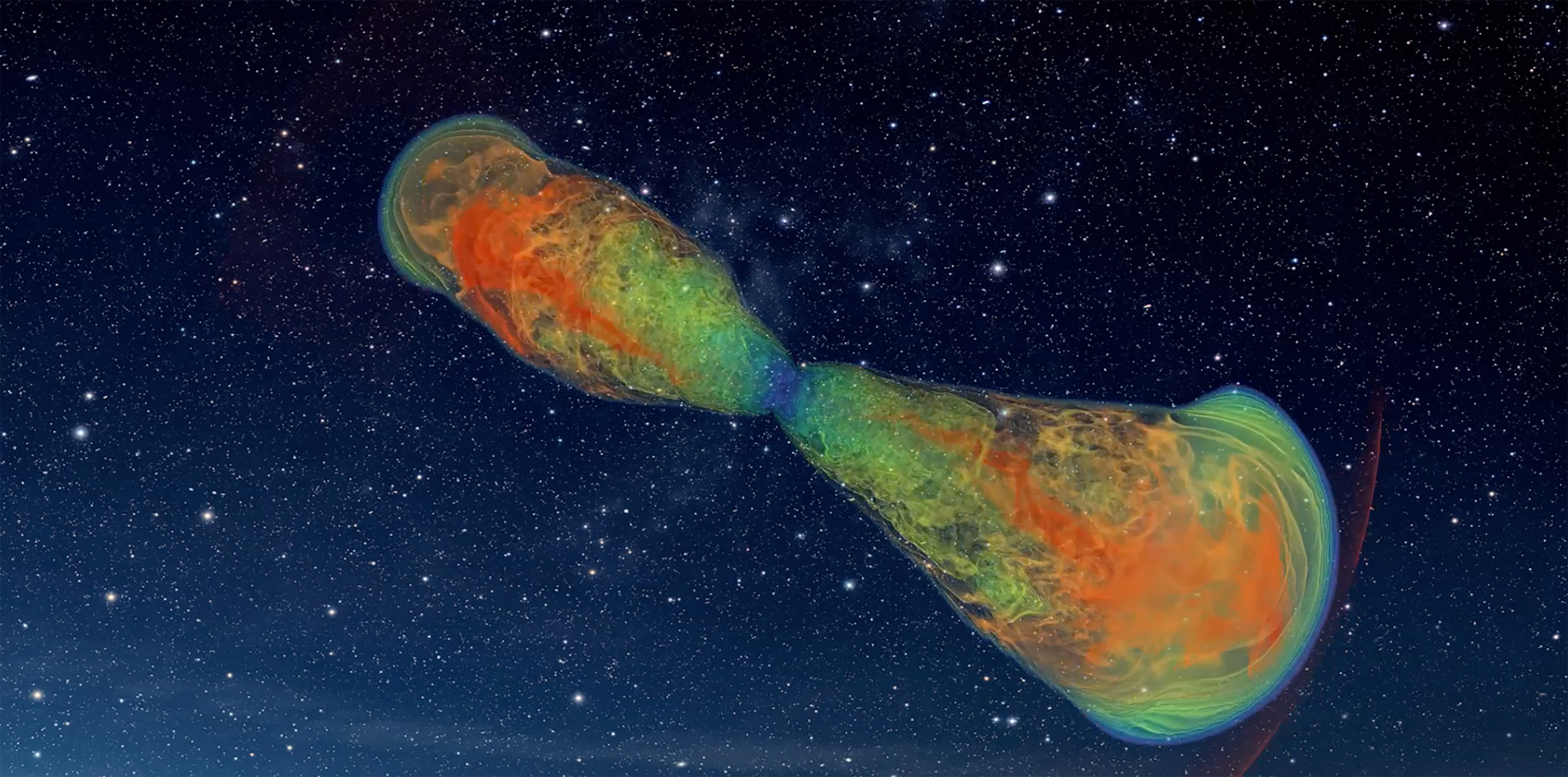Simulation suggests dying stars' cocoons as potential source of gravitational waves

So far, gravitational waves have only been detected from binary systems - the mergers of either two black holes, two neutron stars or one of each. However, a team of researchers from Northwestern University has proposed a new, previously unexplored realm - the turbulent cocoons of debris surrounding dying massive stars.
For the first time ever, scientists have leveraged simulations to demonstrate that these cocoons possess the capacity to emit gravitational waves and the frequency range of these waves should fall within the detectable range of the Laser Interferometer Gravitational-Wave Observatory (LIGO).
When massive stars collapse into black holes, they often generate powerful outflows, known as jets, which consist of particles travelling at near-light speeds. Ore Gottlieb, a CIERA Fellow at Northwestern’s Center for Interdisciplinary Exploration and Research in Astrophysics (CIERA) and the lead author of this study, and his collaborators used state-of-the-art simulations to trace this entire process - from the star's collapse to the moment the jet escapes, with the initial aim of investigating whether the accretion disk around a black hole could emit detectable gravitational waves.
However, the data yielded an unexpected revelation.
"When I calculated the gravitational waves from the vicinity of the black hole, I found another source disrupting my calculations — the cocoon. I tried to ignore it. But I found it was impossible to ignore. Then I realized the cocoon was an interesting gravitational wave source," Gottlieb said.
According to the researchers, as the jets collided with the collapsing layers of the dying star, a turbulent region, described as a "cocoon," began to form around the jet. This region is chaotic, where hot gases and debris intermingle and expand in various directions. When the energetic bubble accelerates away from the jet, it causes disturbances in space-time, resulting in the creation of gravitational waves.
If cocoons do generate gravitational waves, then LIGO should be able to detect them in its upcoming runs, Gottlieb said. Traditionally, researchers have focused their search for single-source gravitational waves on phenomena like gamma-ray bursts or supernovae, but doubts remain about LIGO's ability to detect such events.
Gottlieb calls on the scientific community to shift their attention towards cocoons, which possess both asymmetry and high energy, making them an intriguing candidate for gravitational wave emission. By studying them, scientists could learn more about what happens in the innermost part of stars.










